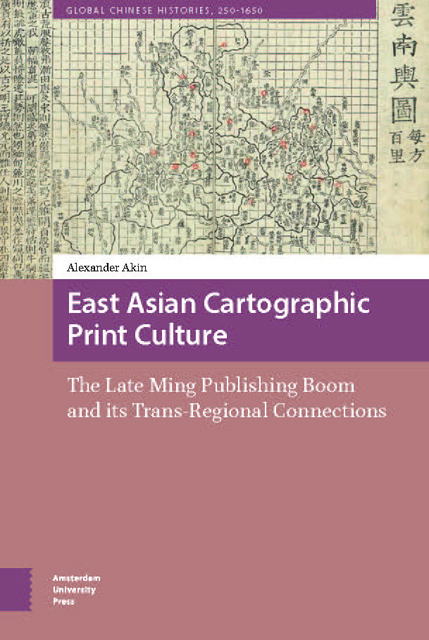 East Asian Cartographic Print Culture
East Asian Cartographic Print Culture Book contents
- Frontmatter
- Table of Contents
- Acknowledgments
- Introduction
- 1 Printed Cartography in the Late Ming: Old Typologies, New Audiences
- 2 Chinese Historical Cartographies: Mapping the Past
- 3 The Jesuits as Participants in the Late Ming Publishing Boom
- 4 Chosŏn Cartography in a Trans-regional Context
- 5 Japanese Cartography between East and West
- Conclusion
- Appendices
- Bibliography
- Index
2 - Chinese Historical Cartographies: Mapping the Past
Published online by Cambridge University Press: 12 January 2023
- Frontmatter
- Table of Contents
- Acknowledgments
- Introduction
- 1 Printed Cartography in the Late Ming: Old Typologies, New Audiences
- 2 Chinese Historical Cartographies: Mapping the Past
- 3 The Jesuits as Participants in the Late Ming Publishing Boom
- 4 Chosŏn Cartography in a Trans-regional Context
- 5 Japanese Cartography between East and West
- Conclusion
- Appendices
- Bibliography
- Index
Summary
Abstract
This chapter focuses on the genre of historical cartography, examining works in a broad range of formats, including maps compiled for administration, for education, and for religious purposes. Tracing developments to the end of the Ming dynasty, it shows how the conditions of the publishing boom fostered the recombination and adaptation of historical maps to new contexts. Because of its utility in contextualizing classical works, this genre was intimately intertwined with the publishing industry that emerged around the national examination system, but historical maps could also buttress, or undermine, administrative and Sinocentric perspectives.
Keywords: Ming, historical cartography, Buddhist cosmography, Yugong, Lidai dili zhizhang tu, county gazetteers
In this chapter I will examine the development of a particular cartographic form, the historical map. Beginning with some of the earliest surviving examples of the genre, we will see the diversity of its incarnations and the changes it underwent during the late Ming. Taking this diachronic view of a single genre highlights the transformation wrought by the late Ming publishing boom and its textual recombinations.
A formalized preoccupation with the past was a hallmark of literati culture in imperial China, which stemmed from a belief that the words and deeds of the ancients offered important lessons in statecraft as well as morality. For many, the Classics reflected an ancient reality that could be revived through a return to the true meanings of these texts. From this zeal bloomed scholarship into textual interpretation. This was the context in which Chinese historical geography developed, giving rise to a variety of traditions of cartographic representation.
Familiarity with this tradition in China remains scarce among specialists in Western cartography. In a prominent study of historical cartography, Jeremy Black devotes a portion of his first chapter to justifying his omission of China from the rest of the book. He first concedes that the concept of historical cartography appeared rather early in China, citing the examples of Pei Xiu 裴秀 and the Song dynasty’s Lidai dili zhizhang tu 歷代地理指掌 圖 (Convenient historical atlas) by Shui Anli 稅安禮, the two best-known early works, but argues that the genre failed to develop over time:
In part, this reflected a rather limited interest in the outside world and a very limited knowledge of its history
- Type
- Chapter
- Information
- East Asian Cartographic Print CultureThe Late Ming Publishing Boom and its Trans-Regional Connections, pp. 93 - 140Publisher: Amsterdam University PressPrint publication year: 2021


